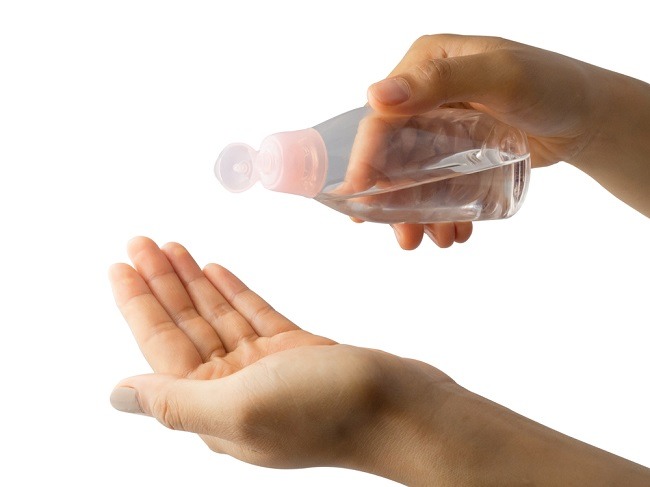Transverse myelitis is inflammation on one part of the spinal cord behind. This condition is characterized by pain, numb or numb, weakness in the legs or arms, and difficulty urinating and defecating.
The cause of transverse myelitis is not known with certainty until now. However, this condition is thought to be triggered by several things, such as infection or immune system disorders.

Patients with transverse myelitis generally recover and can return to walking normally. However, in severe cases, patients can experience permanent paralysis, so they need assistance in carrying out daily activities.
Symptoms of Transverse Myelitis
Symptoms of transverse myelitis include:
- Pain in the lower back that appears suddenly. This condition can spread to other parts of the body, such as to the chest, abdomen, or legs, depending on which part of the spinal cord is affected.
- Impaired sensations, such as feeling like burning, tingling, cold, or numbness. Some sufferers feel sensitive to clothing friction, heat, or temperature
- The arms and legs feel weak. Some sufferers even walk by dragging their feet or experience paralysis.
- Disorders of bowel and bladder, such as constipation or difficulty urinating. Or vice versa, become frequent urination or unable to hold urine (urinary incontinence).
The above symptoms can occur a few hours to a few days after the onset of inflammation. Sometimes, symptoms appear gradually over a matter of weeks.
People with transverse myelitis tend to feel the above symptoms on both sides of the body, just below the inflamed nerve. But in some cases, the symptoms are only felt on one side of the body.
When to go to the doctor
Immediately consult a doctor if you experience symptoms of transverse myelitis, because the symptoms can persist if not treated.
disease sufferer multiple sclerosis, neuromyelitis optica, or lupus also need regular check-ups with the doctor and follow the treatment recommendations from the doctor. These three diseases are thought to be associated with transverse myelitis.
Symptoms of transverse myelitis can also occur in other dangerous neurological diseases, such as stroke. Go to the emergency room immediately if you experience weakness in one of the limbs.
Causes of Transverse Myelitis
It is not known what causes transverse myelitis, but it is thought to be associated with the following conditions:
- Infections, including Lyme disease, syphilis, toxoplasmosis, chickenpox, and herpes zoster.
- Multiple sclerosis, which is a condition when the body's immune system attacks the lining of the brain and spinal cord.
- Neuromyelitis optica, namely inflammation that occurs around the spinal cord and eye nerves.
- Autoimmune diseases, such as lupus and Sjogren's syndrome.
Diagnosis of transverse myelitis
To determine transverse myelitis, the doctor will ask about the symptoms you are experiencing and examine the patient's nerve function. Then, the doctor will perform the following investigations:
- An MRI scan, to look for signs of inflammation in the spinal cord.
- Lumbar puncture (lumbar puncture), which is done by taking a sample of spinal fluid for examination in the laboratory.
- Antibody tests, to check for possible neuromyelitis optica.
Treatment myelitisTransverse
Treatment of transverse myelitis is aimed at alleviating the symptoms experienced by the patient and depending on the associated disease. Treatment includes:
Drugs
Drugs used to treat transverse myelitis include:
- Pain reliever
- Antiviral drugs
- Corticosteroids
- Immunosuppressive drugs
Plasmapheresis
Plasmapheresis is the act of replacing blood plasma with intravenous fluids. This action is performed on patients who have a compromised immune system and do not respond to other treatments.
Recovery
Transverse myelitis patients are also advised to undergo recovery therapy by:
- Occupational therapy to teach basic skills, so that patients can carry out normal daily activities.
- Psychotherapy to treat psychological disorders, such as anxiety, depression, or sexual dysfunction.
- Physiotherapy to help improve muscle strength and function, as well as improve body movement.
Complications Transverse myelitis
If left untreated, transverse myelitis can lead to the following complications:
- Permanent paralysis.
- Erectile dysfunction in men and difficulty orgasming in women.
- Chronic or prolonged pain.
- Anxiety disorders or depression.
PreventionTransverse myelitis
Transverse myelitis usually only occurs once, but in some cases, the disease can recur. To prevent recurrence of transverse myelitis associated with multiple sclerosis and neuromyelitis optica, the doctor will provide treatment for both diseases. Drugs that can be given include interferon, azathioprine, or mycophenolate mofetil.









